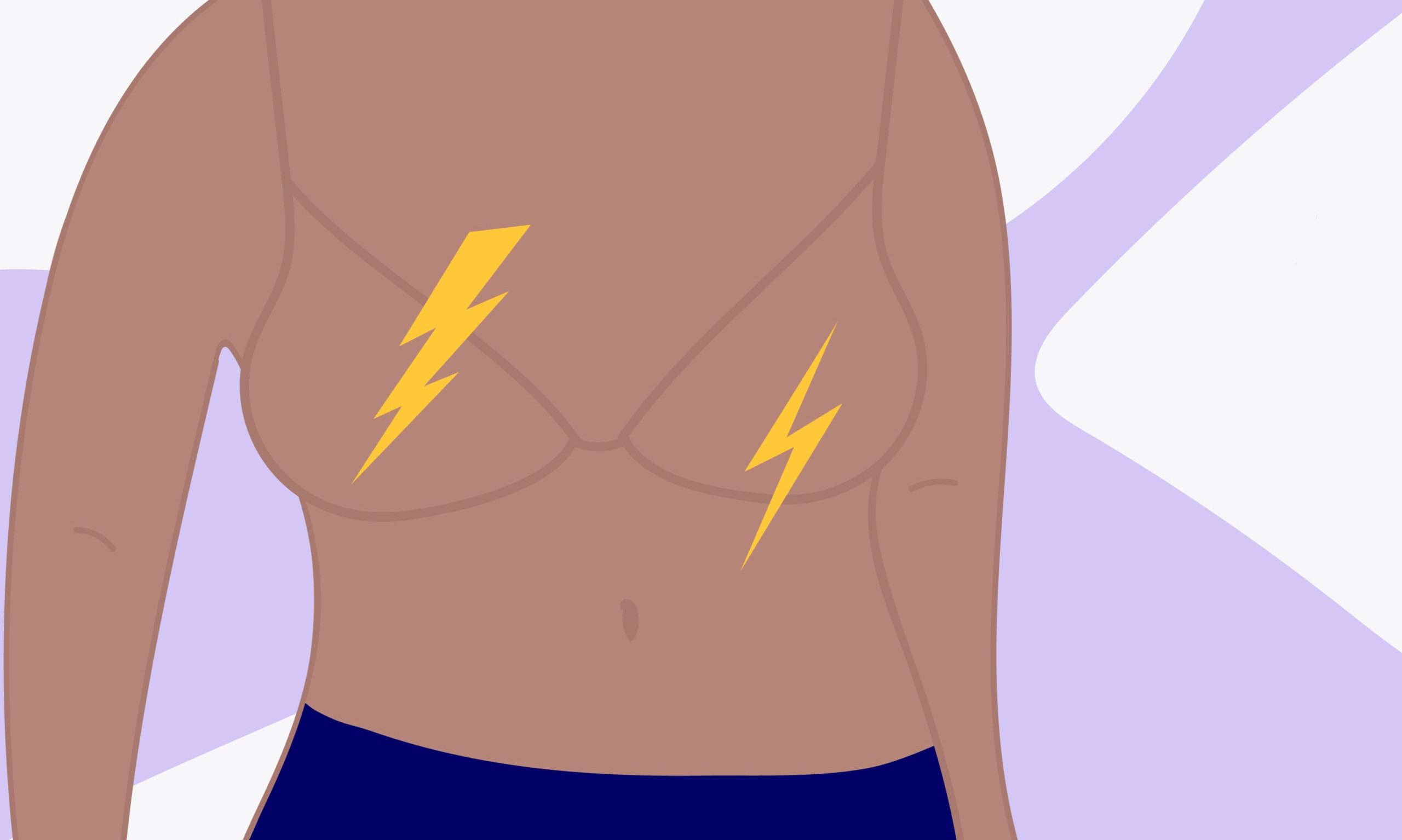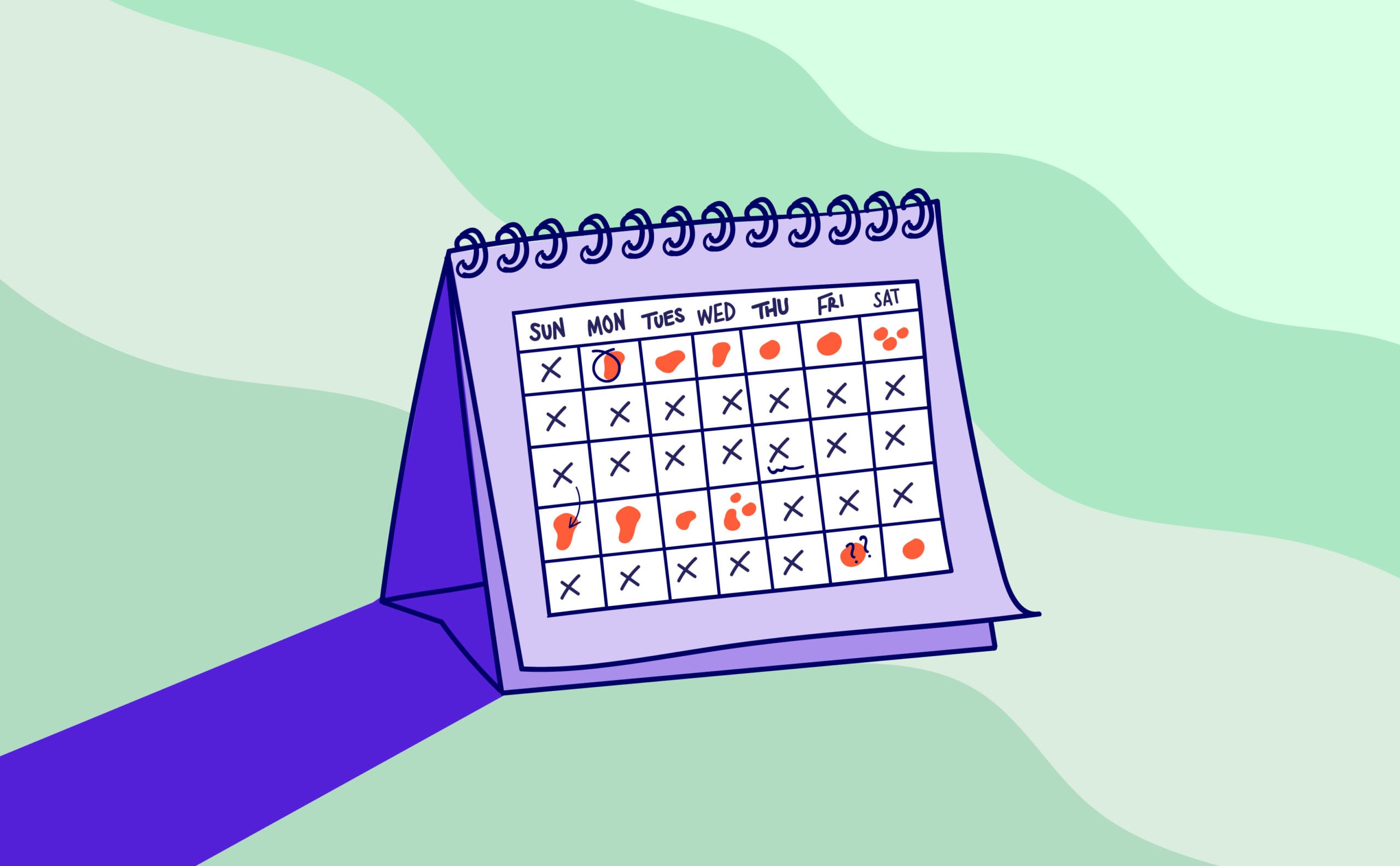The official term for breast pain or soreness is “mastalgia,” which comes in two forms: cyclic and non-cyclic.

Cyclic
Accounting for ⅔ of all breast pain, cyclic mastalgia is associated with our periods (menstrual cycles = cyclic). Pain begins in the luteal phase, right before your period starts, and reduces during the menstrual phase.
The cause? Normal hormonal fluctuations in estrogen and progesterone. The two hormones increase both the size and number of ducts/milk glands (aka lobules), which causes breasts to retain water and feel swollen.
In addition to timing, cyclic mastalgia can be recognized by location of the pain: bilateral, localized in the upper quadrant, and occasionally associated with lumps. And yes, it CAN extend to the armpit and arm, too. Although most common among women in their 20s and 30s (with periods of remission during pregnancy and lactation), cyclical pain may persist into perimenopause due to the erratic surges and drops in hormones that are all-too-common during these years. For the most part, cyclical pain subsides come menopause, with certain exceptions for women using oral contraceptives or hormone therapy.
Non-cyclic
Non-cyclic pain can affect anyone, but is particularly common for women in their 40s and 50s. Because it is not linked to menstruation, non-cyclic pain doesn’t follow a predictable pattern. It can be constant or intermittent, affect one breast or both, involve the entire breast or just a small part…in other words, there’s no way to know when or how it’ll pop up.
Whereas cyclical pain is, more often than not, a sign of expected hormone changes, non-cyclical pain is usually a symptom of a specific condition such as a cyst or benign tumor. Other potential causes include:
- Trauma/injury
- Infection (aka mastitis)
- Strained pectoralis muscle
- Poor support (aka you need a different bra)
- Medications (specifically certain cardiovascular, antidepressant, and HRT meds, as well as birth control pills
- Fibrocystic changes in the breast tissue (thickened tissue with an increased number of cysts)
- High caffeine intake (how high depends on you, everyone is different, and someone find no effect from caffeine)
- Smoking
- Cancer
Breast pain can be scary and many worry that it’s a sign of something more serious like breast cancer. Before we all get a bit nervous, start convincing ourselves of the worst, and go down a rabbit hole on Google, remember this:
Breast pain is usually not associated with cancer, and most breast pain isn’t that uncomfortable.
For women who see their doctor for breast pain, about 85% of women decline any intervention to manage the pain after a negative breast cancer screening – the reassurance of a negative exam is enough. The remaining 15% will require treatment, however, as breast pain negatively impacts physical activity (30%), sexual activity (40%), and/or social activities (10%).
Wondering when to seek medical advice?
Elektra’s founding physician, Dr. Anna Barbieri, MD often advises that bilateral (aka happens in both breasts), cyclical discomfort that disappears a few days after the period starts is likely hormonal and benign. However, there are times when you need to see your provider to be evaluated via a clinical exam and maybe even a mammogram and/or ultrasound:
- If breast discomfort crosses the line from dull ache to full-fledged pain
- If breast pain is one-sided, persistent, and especially if it occurs after menopause
- If breast pain ever accompanies a noticeable lump/nodule, inverted nipple, skin changes, redness and swelling, or nipple discharge (see this information about signs and symptoms of breast cancer from Susan G. Komen)
Dr. Anna Barbieri, MD
Pro tip #1
The #1 lifestyle tip we recommend is to wear a supportive bra that FITS. It sounds simple, but it’ll hands-down make the biggest difference, so it’s worth it. Getting fitted professionally at a department store is one option, but you can now do this virtually! Check out brands like ThirdLove or Harper Wilde.



